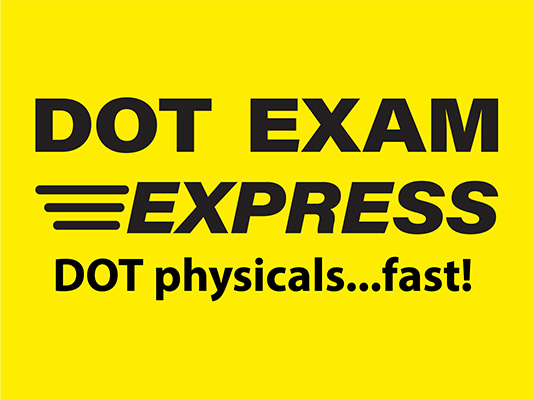FMCSA (Federal Motor Carrier Safety Administration)

Annually, 2 million people get injured and over 32, 000 people get killed, due to motor vehicle crashes. Speeding and drunk driving are major causes of crash. The FMCSA works toward the goal of reducing injuries, crashes and deaths, related to large buses and trucks.
The FMCSA is the Federal Motor Carrier Safety Administration. This independent entity was created by the Motor Carrier Safety Improvement Act of 1999. The FMCSA functions as a separate entity within the Department of Transportation of the United States of America. FMCSA has its headquarters in Washington, D.C.
FMCSA: Roles and Responsibilities
FMCSA supervises and regulates CMVs or commercial motor vehicles. This Federal body has 4, 000+ interstate bus operators, 500, 000+ commercial trucking entities, and 4 million CDL (commercial driver’s license) holders, under its purview.
As a major Federal body responsible for CMV safety, the FMCSA performs the following functions:
- Sets standards that ensure motor carrier safety without compromising efficiency
- Assesses high-risk motor carriers using data-driven systems such as safety information systems. Implements safety regulations accordingly
- Promotes safety awareness among commercial drivers, carrier operators, and the public through educational messages
- Works with enforcement agencies at the local, state and Federal levels, and entities such as carrier bodies, safety organizations and labor groups. The goal is to collectively improve on-road safety and reduce truck and bus-related crashes.
Medical Exams for Ensuring CMV Safety
FMCSA enforces a range of safety programs to improve CMV safety as well as the safety of the drivers and the public.
The CSA program – Compliance, Safety, Accountability – reinforces the role of carrier operators and drivers in ensuring safety on roads. CSA is applicable to motor carriers as well as owner-operators.
As accountable entities, these stakeholders need to be aware of safety issues, prioritize them, and implement appropriate measures. Any deviation is followed up with actions such as warning letters and investigation.
PSP (Pre-Employment Screening Program), New Entrant Safety Assurance Program, Safety Measurement System (SMS) and Federal Hazardous Materials Safety Permit Program, are some examples of other safety programs under FMCSA purview.
FMCSA also offers grants for government agencies to improve safety and slash crash risks of large vehicles.
The Medical Program Division of the FMCSA promotes safety on America’s roads and highways through safety-aware and physically-able drivers. The FMCSA recognizes drivers as the primary safety path-guiders, which is why CMV safety starts with them. The drivers are responsible not only for their own safety but also for that of the public.
The medical requirements for a CDL (Commercial Driver License) assess an individual for his/ her physical and mental health. They verify if or not an individual is eligible to function as a driver.
CDL medical requirements are enforced by the respective state. These medical standards are regulated by the FMCSA and the DOT – U.S. Department of Transportation. CDL standards are stricter than regular license requirements to ensure greater safety on the roads.
DOT Medical Exams
DOT medical exams or a DOT physical exam are a mandatory part of becoming a CDL holder. A DOT physical exam certificate is usually valid for 2 years. A CDL holder has to renew the certificate for further eligibility.
An individual that makes false claims about their health condition during a DOT physical exam, faces severe civil penalty. For CDL requirements pertaining to your state, visit here.
Who Needs a DOT Physical?
Any individual aspiring to obtain a CDL has to undergo a DOT physical. If your job as a driver necessitates the following, then you need a DOT physical:
- Operate motor vehicles that transport 15+ people
- Function as a paid operator of motor vehicles that transport 8+ people
- Use a hazmat placard on the vehicle to transport hazardous substances
- Serve as an operator of motor vehicles that carry a weight standard of 10, 000 + pounds in gross combination weight
What does a DOT Physical Involve?
The primary requisite at a DOT physical center is to submit a form that details your entire health history. These details include:
- Complete details about your current medications
- Any existing medical conditions, and symptoms you may be experiencing
- Past surgeries
- Use of substances such as alcohol, tobacco, or other
Once, you fill the form, the medical examiner performs a physical exam to assess your:
- Vision
- Hearing
- Blood pressure
Other tests may be performed to evaluate any other health condition
Blood Tests and Urinalysis
This is an important part of a DOT exam as it serves as an indicator of the substances in your body. A urinalysis report gives information about your blood sugar levels as well as health conditions such as liver or kidney disease, or diabetes.
Blood tests may also be performed. They can reveal any underlying diseases of the liver, kidneys, or of the immune system.
Every test in a physical evaluates an individual’s physical and mental capability to efficiently perform his/ her duties as a driver.
DOT Physical Frequency
On completion of a DOT physical, the aspirant receives a certificate that is valid for 2 years. If the aspirant has any underlying physical or mental issue, then the validity is lesser.
Some medical conditions reduce the validity of a DOT physical and necessitate a reexam every year. These include:
- Heart ailments
- Hypertension or high blood pressure
- Diabetes mellitus
Some conditions may warrant more frequent reexaminations. For example, if you suffer from severe high blood pressure and are undergoing treatment, then you may need a DOT physical every 3 months. The exam serves as an indication that you are taking steps to manage your condition.
Is your DOT Physical Valid?
A DOT physical certificate is valid only if it is performed by a medical examiner authorized by the FMCSA. The authorized candidates are listed the National Registry of the FMCSA.
Some authorized individuals of the medical world include:
- DCs or doctors of chiropractic
- MDs or medical doctors
- DOs or doctors of osteopathy
- PAs or physician assistants
- APRNs or advanced practice registered nurses
Passing a DOT Physical
A DOT physical is stringent for the aim is to ensure public and driver safety while operating large vehicles such as buses and trucks. A certificate is issued only if it is medically proved that you are physically and mentally fit to operate a commercial vehicle.
A certificate is obtainable if you prove that your health is fine. Even if you have a health condition, a certificate may be obtained if you prove your condition is manageable. It is also important to show that you are undergoing treatment and are being supervised by a doctor.
The following conditions, however, may negate your qualification for a CDL:
- Loss of hearing
- Vision problems that cannot be treated
- Epilepsy
- Narcolepsy
- Diabetes mellitus that is not under control
- Heart or lung conditions that are ignored without proper treatment
Conclusion
FMCSA exists to ensure on-road safety, especially with large vehicles such as trucks and buses. In addition to adhering to FMCSA standards for owning a license, drivers must follow safety instructions while on the road. Obeying speed limits, practicing distraction-free driving, and using a seat belt, are part of responsible driving.
Visit the FMCSA website for more information.
References
